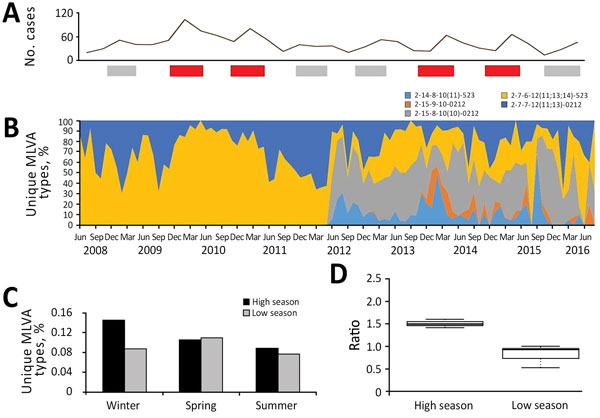Volume 24, Number 6—June 2018
Dispatch
Novel Salmonella enterica Serovar Typhimurium Genotype Levels as Herald of Seasonal Salmonellosis Epidemics
Figure 2

Figure 2. Population dynamics of Salmonella enterica serovar Typhimurium MLVA types, New South Wales, Australia, 2009–2016. A) Total number of novel or unique MLVA types. Red bars indicate high season and gray bars low season. B) Temporal dynamics of the most common MLVA types expressed as proportions by type. C) Quarterly counts of novel MLVA types during winter, spring, and summer for high and low seasons (p = 0.05). D) Box plots of the mean ratio of novel MLVA type counts during high and low seasons (p = 0.006). Box top and bottom indicate third and first quartiles, respectively; horizontal lines within boxes indicate medians; whiskers indicate CIs; dotted vertical lines indicate the spread of values in the subgroup. We built box plots with BoxPlotR (http://shiny.chemgrig.org). MLVA, multilocus variable-number tandem-repeat analysis